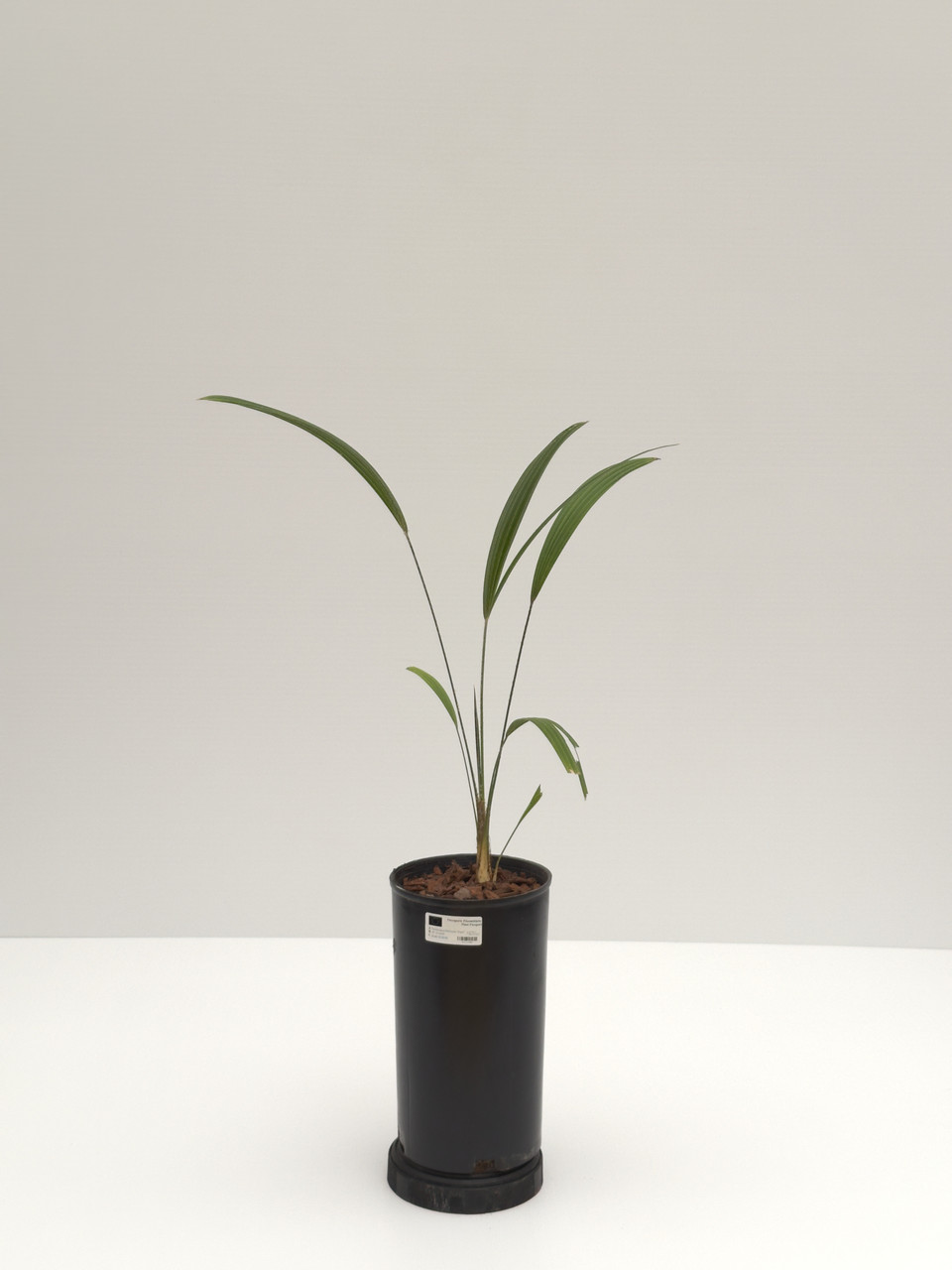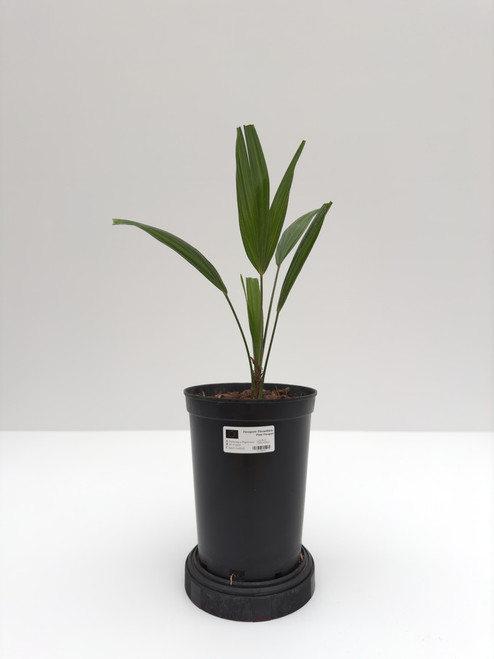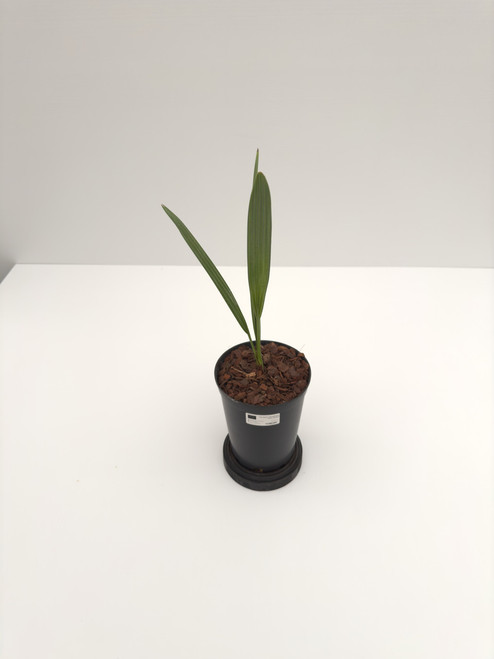Product Description
Habitat and Distribution
Assam, China South-Central, East Himalaya, Myanmar, Nepal. Trachycarpus martianus form two distinct populations, one at 1,500 m (4,900 ft) in the Khasia Hills, Meghalaya Province, in northeast India, the other at 2,400 m (7,900 ft) in central northern Nepal. Other populations have been reported in Assam, Sikkim, Burma and southern China.
Description
Solitary slender, bare trunk, often with marcecent leaf base in habitat, a full but open crown of elegantly Large, arching, segmented, fan leaves. It is quite a fast grower and an easy growing. The Nepalese form is the one to go for if available as it is alledgedly hardier due to the fact it grows at a higher altitude. Editing by edric.
Culture
Cold Hardiness Zone: 9b
Comments and Curiosities
Etymology: The species is named after the German botanist Carl Friedrich Philipp von Martius (1794-1868).
The main identifying characteristics are the regular leaf splits (to about half way), the coffee bean shaped seeds (similar looking to Trachycarpus latisectus) and the bare, as opposed to fibrous trunk. The new leaf spear and edges of the petioles are covered with a white tomentum.
Trachycarpus martianus var. 'kassia hills'. Once known as Trachycarpus khasianus, is the most elegant species in the genus. Its slender, bare trunk supports a full but open crown of elegantly arching, very regular and much segmented, large fan leaves. It is quite fast and easy growing. Well suited to subtropical as well as temperate climates it will tolerate moderate frosts.
Trachycarpus martianus var. 'Nepal'. Similar to Trachycarpus martianus 'Khasia Hills', this form from the Himalayas in Nepal, has slightly smaller leaves with fewer segments and is more tolerant of frost and drought as it grows further north at higher altitudes.
"Nice looking Trachycarpus but without the fuzzy stems of the more common species. This one has longer, droopier petioles and very finely divided perfectly shaped fan leaves. It's a moderate grower and does best in a Mediterranean climate (not a great palm for hot, humid environments, reportedly... yet I saw some growing in Hawaii that looked very healthy). This palm is agonizingly slow as a seedling for me in southern California, being about 3-5x slower than T fortunei and takil." (Geoff Stein)
In our personal view, the form of T. martianus from the Khasia Hills, once known as Trachycarpus khasianus, is the most elegant species in the genus. Its slender, bare trunk supports a full but open crown of elegantly arching, very regular and much segmented, large fan leaves. It is quite fast and easy growing. Well suited to subtropical as well as temperate climates it will tolerate moderate frosts (for a close-up see "Principes" Vol. 38:2). (Rare Palm Seeds.com)
Similar to the now popular T. martianus from the Khasia Hills, the Nepal form from the Himalayas in Nepal, has slightly smaller leaves with fewer segments and is more tolerant of frost and drought as it grows further north at higher altitudes. Equally fast and rewarding to grow. (Rare Palm Seeds.com)




















